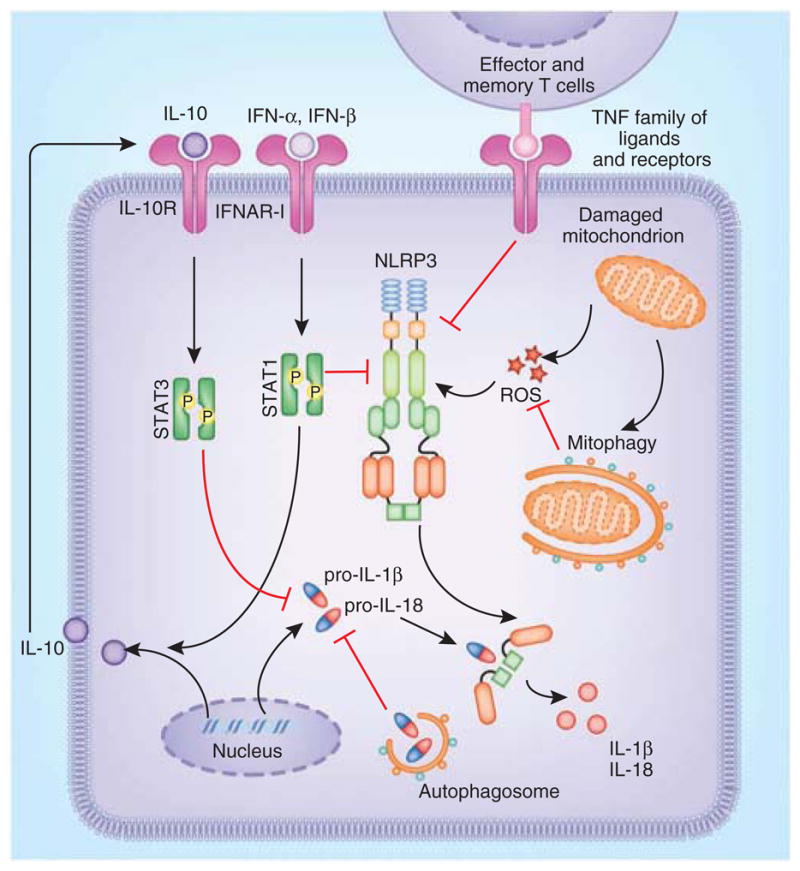Figure 4.

Regulation of the NLRP3 inflammasome. Type I interferon signaling attenuates NLRP3- and NLRP1-dependent IL-1β responses by two mechanisms (NLRP1 not shown here). IFN-α and IFN-β trigger the production of IL-10, which then acts on the cells in an autocrine and/or paracrine manner to suppress the intracellular concentration of pro-IL-1β. Type I interferon signaling can also inhibit NLRP3- and NLRP1-mediated caspase-1 processing via an unknown mechanism. Autophagy regulates IL-1β production via the removal of damaged mitochondria, which are potent sources of ROS that drive NLRP3 activation. Additionally, autophagosomes sequester intracellular stores of pro-IL-1β and target it for degradation. Effector and memory T cells block NLRP3 and NLRP1 inflammasomes via a cognate mechanism mediated by interactions between ligands of the TNF superfamily and their receptors. Mitophagy, mitochondrial autophagy.
